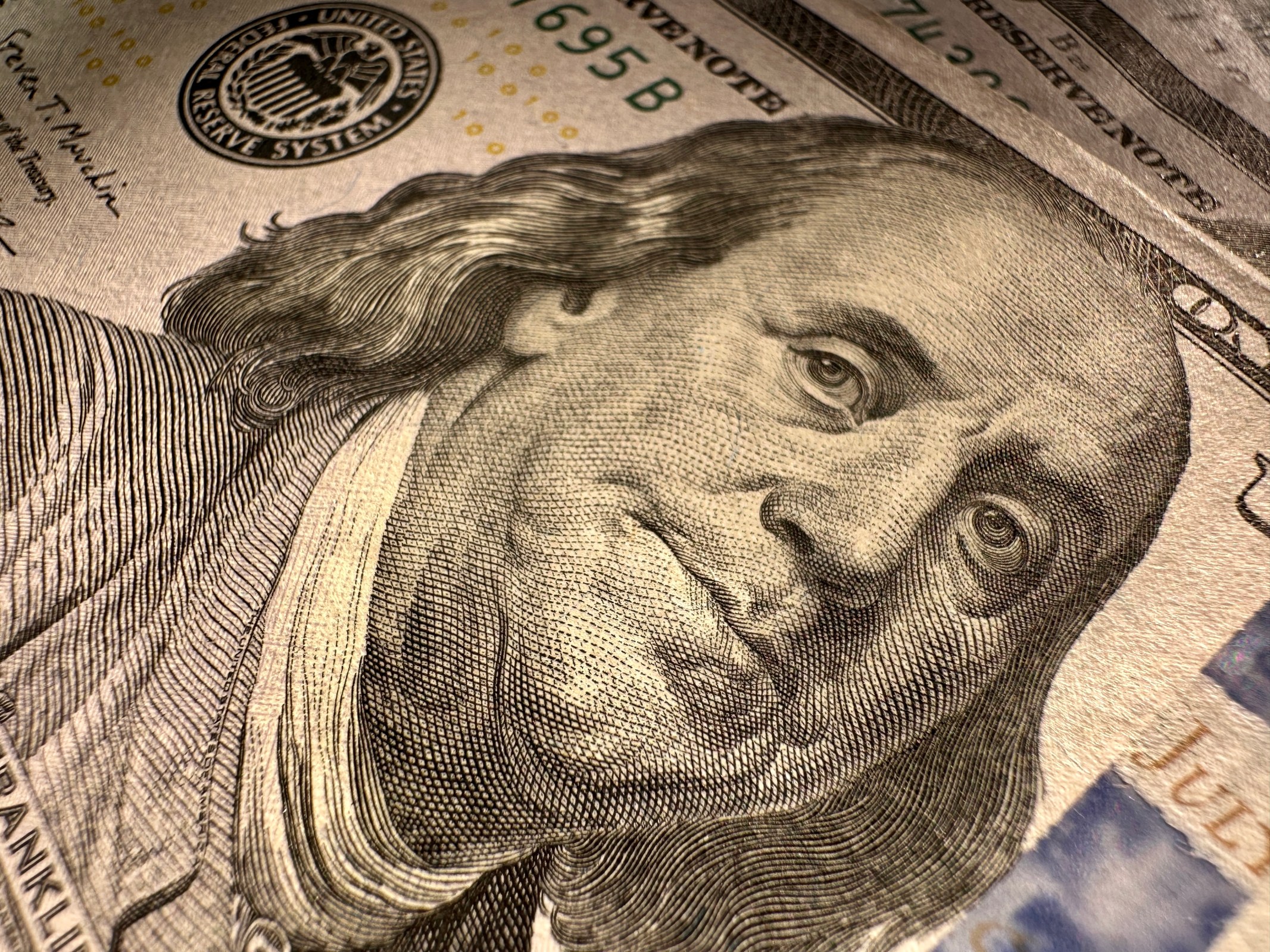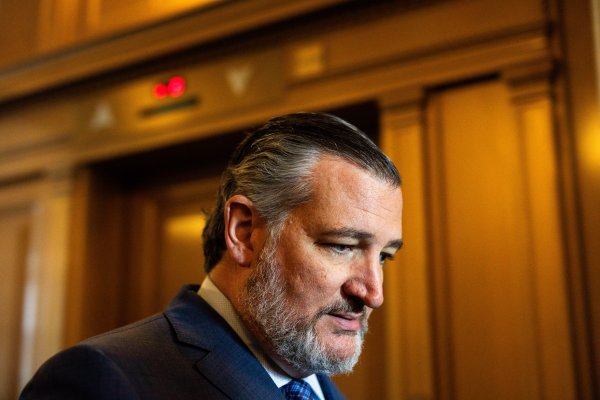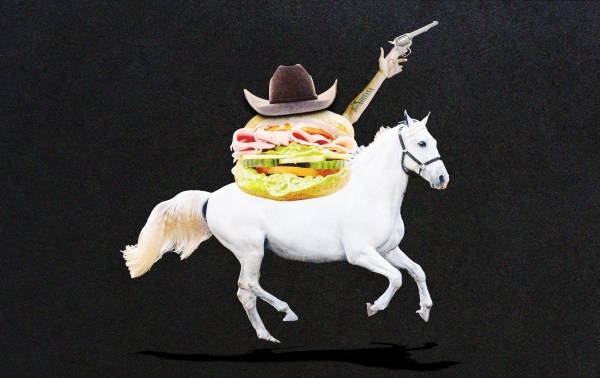Looking to get the most from your Dispatch experience? By filling out a few key details about yourself, you can help us ensure we’re delivering exactly the kind of content you want to read. We’re all about prioritizing your time and interests—fill out this quick survey to get started.
We should have eaten our spinach.
Nearly 20 years ago, I started writing a column for National Review called “Exchequer,” with a focus on fiscal policy, debt, and deficits. A point I frequently returned to—and frequently return to still—is that dealing with our national debt problem and getting the U.S. government’s finances back onto stable footing is something that will be easier to do the sooner we start and more painful to do the longer we wait, especially if we put off reform until we are in a fiscal crisis of some kind, which is what Washington seems dead set on doing.
I was—and am—what my friend Larry Kudlow calls an “eat-your-spinach guy.” Kudlow and other sunny optimists, such as Arthur Laffer, are not big on eating spinach. They are big on ordering dessert first, counting on tax cuts and other incentives to goose the economy to such an extent that GDP growth does the hard work for us—what I have referred to at times as “naïve supply-side” economics. When it comes to diet, eating dessert first will indeed tend to make you grow (like it or not), but economic growth is, alas, a little more difficult to goose.
While Laffer and politicians enamored with his famous curve are correct to observe that growth effects from tax cuts may in some circumstances mean that $1 in on-paper tax cuts does not actually produce $1 in real-world lost revenue, it is not the case, as the naïve supply-siders have promised from time to time, that tax cuts are typically revenue-enhancing in the context of a modern market economy. A $1 tax cut may end up losing the Treasury only 82 cents (or whatever; these numbers are purely for illustration) in revenue, but $1 in tax cuts does not “pay for itself” and then go on to produce an extra 22 cents (or whatever) in additional tax receipts—typically: Laffer is correct in arguing that there are circumstances in which a tax cut can be revenue-enhancing in a meaningful way (imagine cutting investment-income taxes from 99.9 percent to 20 percent and the effect that would have on both investment and tax compliance), but those circumstances do not seem to be found, or at least do not seem to be often observed, in the U.S. economy.
As is often the case, one of the problems we run into is using the wrong point of comparison: Tax revenue has sometimes increased following tax cuts, but gross receipts normally trend reliably upward in the U.S. economy, simply because the U.S. economy grows, sometimes rapidly and sometimes modestly, except during those rare (but regular) periods when it is in recession. Lots of things contribute to growth or lack of growth—tax policy can be one, but it isn’t the only one or, in most cases, the most important one. (Attributing 100 percent of U.S. economic growth to the tax policies of this or that presidential administration or Congress is unserious and intellectually dishonest.) The relevant point of comparison is not between tax revenue before and after the tax cut, but between tax revenue with the tax cut and what it would have been without the tax cut—which is an unobservable counterfactual, one that we can model or estimate but cannot directly measure per se.
(We run into the same problem with the debate about the effect of minimum-wage laws on employment; comparing employment, total wages, etc. before and after the change does not actually tell us anything very useful; the relevant comparison is between what actually happened in the job market and what would have happened absent the policy change, which is, again, not directly observable.)
What the naïve supply-siders are actually acting on is not some rigorous economic theory based on Laffer’s work, but what supply-sider Jude Wanniski called the “Two Santa Claus Theory,” which is not a theory of economics but a theory of politics: Nobody votes for Scrooge, and, so, when it comes to bribing Americans with our own money, the Republicans need something to compete with the Democrats’ spending giveaways. Tax cuts filled that political role splendidly until Republicans had so much success with them that tax cuts lost their political juice, because a majority of federal tax revenue is now extracted from a small minority of high-income taxpayers, one whose total federal income-tax burden far exceeds its share of total income.
Growing our way out of hard choices is a nice idea. But the fact is that there is no fat guy in a red suit coming down the chimney with a sack full of budget-balancing goodies. I will be sad when the day comes when my children stop believing in Santa Claus—but I will be grateful when the day comes when my conservative friends do.
As a non-paying reader, you are receiving a truncated version of Wanderland. You can read Kevin’s full newsletter by becoming a member here.
During one memorable conversation on Kudlow’s old CNBC show many years ago, he hit me with a very bold claim: that he and other like-minded eat-dessert-first guys could, if given the chance, get the economy back to Reagan-era levels of GDP growth—and keep it there on a sustained basis. “I did it before, and I’ll do it again,” he thundered. That was cable television, and he was being entertaining, of course—though Kudlow was a policy bigwig at Reagan’s Office of Management and Budget, he does not actually believe he was personally responsible for the booming economy of those years. But he is also a true believer. As it happens, history handed us an opportunity to test Kudlow’s confidence, and he became director of the National Economic Council in the first Trump administration, where he was joined by many like-minded economic thinkers (and a fair number of utter crackpots). The verdict is in, the jury is unanimous, and there is no appeal:
The eat-dessert-first guys have hosed us good. You guys really should have eaten your spinach.
Wind back the clock 15 years or so. In 2010, the U.S. economy was recovering from the financial crisis and the Great Recession. Average real GDP growth during the Barack Obama years (please apply the usual caveat about superstitious beliefs involving presidents and economic performance) was a relatively anemic 2.3 percent, and the national debt when Obama left office in 2017 stood at $20 trillion—a shocking number. In 2017, Obama handed the keys over to Donald Trump—and, through him, to Kudlow et al.—and what followed during the first Trump administration was … four more years of relatively anemic 2.3 percent economic growth, with the national debt standing at an even more shocking $28.4 trillion. Even before the COVID pandemic, the deficit was growing during the Trump years, not declining.
Nice going, optimists.
If you really want to put yourself into a jump-out-of-a-window kind of mood, consider what could have been if the people in power had listened to us eat-your-spinach guys. Those of you who are old enough to remember 2010 will not remember it as a period of terrible austerity—we had a big, fat federal government in 2010, with a lot of big, fat federal fingers in a lot of pies. What would have happened if we had simply held the line at the time and kept spending at 2010 levels of $3.45 trillion a year for the next 15 years? Assuming that tax revenue came in at its actual historical numbers (and conceding that this is grossly simplified, back-of-the-envelope stuff) we’d have a very, very different outlook: Not a balanced budget or a paid-down debt, but an accumulation of only (only!) about $2.7 trillion in new debt over the next few years, with—the really good news—the national debt peaking in 2018. The budget would have gone into surplus in 2019, and the new president and Congress coming into office in 2021 would have enjoyed a considerable and well-established primary surplus—which, if they just kept letting my imaginary scenario play out, would have driven the debt down mightily in the subsequent years.
(In case you are wondering: In order to avoid having the comparisons distorted by inflation, both revenue and outlays in the above scenario are in 2009 constant dollars as calculated by the U.S. Treasury. You can access a whole mess of very interesting spreadsheets detailing revenue and outlays here. I’d like to emphasize here that this is not meant as some kind of rigorous econometric model of what would have happened, only to give you a sense of the scale of how much easier it would have been if we had started working on the problem 15 years ago—it’s not like we didn’t know it was a problem then.)
Tax hikes are not my favorite spinach dish, but let’s add that ingredient into the mix. Would higher tax revenue help stabilize the national finances? Undoubtedly. From 1996-2001, federal tax collections ranged between 18.2 percent and 20 percent of GDP, topping out with the sizable budget surplus of 2000. Those were some pretty good years, economically speaking. (It wasn’t that the economy was good because taxes were high; it was more the case that tax revenue was high because the economy was booming.) Taxes dipped below 15 percent of GDP in the wake of the financial crisis, but were back up to the 18-percent range by the end of the Obama years. The problem is that federal spending jumped up from 17.5 percent of GDP in the surplus year of 2000 to more than 20 percent of GDP by the end of the Obama years. If taxes had held steady at almost 20 percent of GDP, we’d have run deficits of about 0.4 percent of GDP on average instead of the 3.5 percent of GDP we actually averaged.
And things did not improve from there. The Trump era was marked by persistently high spending, and not only in the outrageous COVID-spike year of 2020, when spending hit almost 31 percent of GDP. Spending barely dipped below 20 percent (and I do mean barely: to 19.9 percent) in 2018, but otherwise remained above 20 percent of GDP throughout the first Trump administration. Trump-era tax receipts maxed out at 17 percent in 2021, but mostly stayed closer to 16 percent. Revenues at 16 percent of GDP and spending at 20 percent of GDP is how you go broke. Revenues at 20 percent of GDP and spending at 20 percent of GDP is how you have a government that is fiscally stable, even if a few of us cranky libertarians gripe about $1 in $5 being hoovered up by Uncle Stupid.
The Puritan in me doesn’t like public debt at all, though we might have found it expedient to take on a little bit of extra debt related to COVID or needful military and infrastructure improvements, but these would be, in the grand scheme of things, eminently manageable—had we put ourselves on sounder footing back when doing so would have been both politically and economically easier. Imagine having the world’s largest national economy—one that is the global center of both technological and financial life—and enjoying prudent, low-debt, or even deficit-free government with excellent long-term fiscal prospects. One assumes that this would have had some happy effects on capital flows, interest rates, and—most important—real investment and innovation.
What did we get instead? In the first quarter of this year, federal debt stood at 120 percent of GDP. Spending is out of control. Entitlements remain unreformed. Needed expenditures are put off because our finances are under so much pressure from popular giveaways and, increasingly, from interest payments on the debt that we have already acquired, which now exceed spending on national defense. We spent more than $1 trillion on interest payments in 2024, and have already spent more than $1 trillion on interest in FY 2025. Our tax code still appears to be the nightmarish work of a joint committee comprised of Franz Kafka, Hieronymus Bosch, Otto von Bismarck, and Thurston Howell III. We spend money like a methhead with an 88 IQ and a PowerBall jackpot that just hit his checking account.
And for what? What do we have to show for it? Joe Biden got to spend a ton of money on green-economy nonsense under the pretext of reducing inflation. Donald Trump got to put his signature on some COVID-19 relief checks. Warren Buffett’s Social Security benefits were not reduced.
Hooray.
A couple of years of ugly inflation seems to have been enough to generally discredit “Modern Monetary Theory,” the beloved progressive superstition that the U.S. government can run essentially infinite deficits and engage in essentially infinite spending without ill effect simply because it is able to borrow in its own currency. Oops. Embarrassing! But we have more than a couple of years—a couple of decades, in fact—of evidence that Republicans’ strategy of growing our way out of our dire fiscal straits simply does not work.
Alas, I do not think that people who are content to work alongside such crackpots as Peter Navarro are capable of being embarrassed by economic policy, however imbecilic.
If you want to fix the debt, then you have two levers to pull: One is increasing tax revenue, and the other is decreasing spending. It is not easy to do, but the basic options are not impossibly complex. We should avail ourselves of those options while we still have options.
I like spinach. And one good thing about spinach: It’s cheap.
Wishful thinking, on the other hand, is expensive. And we cannot afford much more of it.
Words About Words
You know how 3-year-olds ask a lot of perplexing questions? My oldest boy has questions—lots of them. And the other night at dinner, over his fruit course (which followed the rice course and preceded the nugget course), a language matter arose: We call collard greens “greens” because they are green—but do we call oranges “oranges” because they are orange, or do we call the color orange “orange” because it is the color that oranges are? Mojo leaned toward the latter explanation, and, as it turns out, he is correct.
Orange, that famously unrhymable word (don’t tell Eminem), comes from the Sanskrit nāraṅga via Persian, Arabic, and French derivatives, with the word referring to the tree and its fruit, after which the color is named. If it weren’t for the fruit, what would we call the color? Perhaps “sunset,” or “carrot,” or “pumpkin,” or “trump.”
The amarillo tree, on the other hand, is named for the color: Amarillo is Spanish for yellow. (The Texas city in which I was born apparently takes its name from the yellowish soil around the stream where the first Spanish settlement there was planted.) So, it’s the other way around from orange. The Spanish color comes from the Latin amarellus and its root, amarus, meaning sour or bitter—one hypothesis is that the color name was inspired by the yellowy hue of bile, one English term for which, gall, is related to the English word for yellow. Our English yellow comes from a Proto-Indo-European root meaning shine. It is geolu in Old English and related to such words as green, gold, glow, glitter, gleam, and, as mentioned, gall—variations on the themes of brightness, yellowness, and glowing.
Many languages have related words for red, mostly beginning with r- and derived from the Sanskrit rudhiráḥ, meaning bloody or, simply, red.
Blue seems to have been derived from words that just mean blue.
Black comes from the Proto-Germanic word for burnt.
White comes from the Proto-Indo-European word for people who vote for Bernie Sanders.
(No, not really, but have you seen Vermont?)
Elsewhere
You can buy my most recent book, Big White Ghetto, here.
You can buy my other books here.
You can check out “How the World Works,” a series of interviews on work I’m doing for the Competitive Enterprise Institute, here.
In Closing
The Trump administration has, no great surprise, targeted former Trump aide John Bolton, launching a criminal investigation into the supposed mishandling of classified information. The current director of the FBI, Kash Patel, put Bolton on an enemies list he published in a book called Government Gangsters; Patel is a crackpot and a documented fabulist. Vice President J.D. Vance says the investigation is “not at all” related to political considerations; the vice president is a reasonably well-documented habitual liar and fabulist, one who has gone as far as to publicly justify his fictitious inventions on the grounds that they are politically useful. At the top of the Trump administration is Donald Trump, who is surely the most prodigious liar in the history of American public life. At the top of the Justice Department is Pam Bondi, who manufactured fake evidence files in the Jeffrey Epstein matter to use as props.
I do not know John Bolton well. What I do know of him suggests that he is a man of integrity and generally good judgment, although he had the poor judgment to go to work for the Trump administration the last time around and has suffered the reputational diminishment inevitable in doing so. I am certainly inclined to trust him more than any of the grotesques, fools, and miscreants who have his name on their public or private lists of enemies.
I wish John Bolton well and would be surprised to learn that he had done anything malicious or irresponsible in his public duties. But his current travails are a reminder that there is no honorable way to serve in a Trump administration, and that the price of doing so can be very, very high. You lie down with dogs, you get up with fleas.











Please note that we at The Dispatch hold ourselves, our work, and our commenters to a higher standard than other places on the internet. We welcome comments that foster genuine debate or discussion—including comments critical of us or our work—but responses that include ad hominem attacks on fellow Dispatch members or are intended to stoke fear and anger may be moderated.
With your membership, you only have the ability to comment on The Morning Dispatch articles. Consider upgrading to join the conversation everywhere.